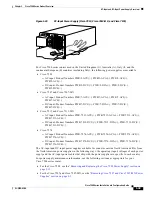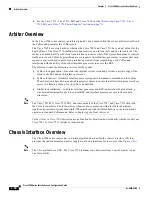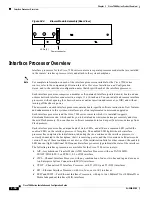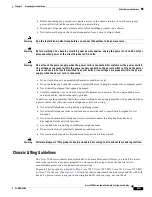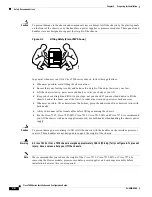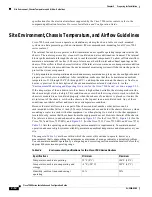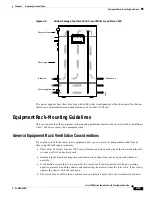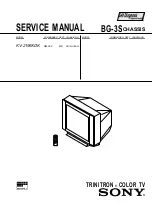
2-2
Cisco 7500 Series Installation and Configuration Guide
OL-5008-03 B0
Chapter 2 Preparing for Installation
Safety Recommendations
Note
The Cisco 7513, Cisco 7513-MX, and Cisco 7576 rack-mounting procedure requires two people.
•
One interface cable for each physical interface required
•
A 20A circuit breaker and 20A outlet for the Cisco 7513, Cisco 7513-MX, and
Cisco 7576 (required)
•
A CSU/DSU for each data terminal equipment (DTE) serial interface
•
Ethernet and Fast Ethernet transceivers (if required)
•
Modem for remote configuration (if required)
•
Antistatic mat or antistatic foam pad if you plan to remove interface processors or replace
components on the board
•
Your own ESD grounding strap or the disposable ESD strap included with the system
Safety Recommendations
Warning
Only trained and qualified personnel should be allowed to install, replace, or service this equipment.
Observe the following safety guidelines before installing a Cisco 7500 series router; they will help to
ensure your safety and protect your equipment. This list is not inclusive of all potentially hazardous
situations, so be alert.
•
Always turn all power supplies off (O) and unplug all power cables before opening the chassis.
•
Keep the chassis area clear and dust-free during and after installation.
•
Keep tools and chassis components away from walk areas.
•
Do not wear loose clothing, jewelry (including rings and chains), or other items that could get caught
in the chassis. Fasten your tie or scarf and sleeves.
Warning
Metal objects heat up when connected to power and ground, and can cause serious burns.
Safety with Electricity
Follow these basic guidelines when working with any electrical equipment:
•
Look carefully for possible hazards in your work area, such as moist floors, ungrounded power
extension cables, and missing safety grounds.
•
If an electrical accident occurs, proceed as follows:
–
Use caution; do not become a victim yourself. Disconnect power to the system.
–
If possible, send another person to get medical aid. Otherwise, assess the condition of the victim
and then call for help.
–
Determine if the person needs rescue breathing or external cardiac compressions; then take
appropriate action.






